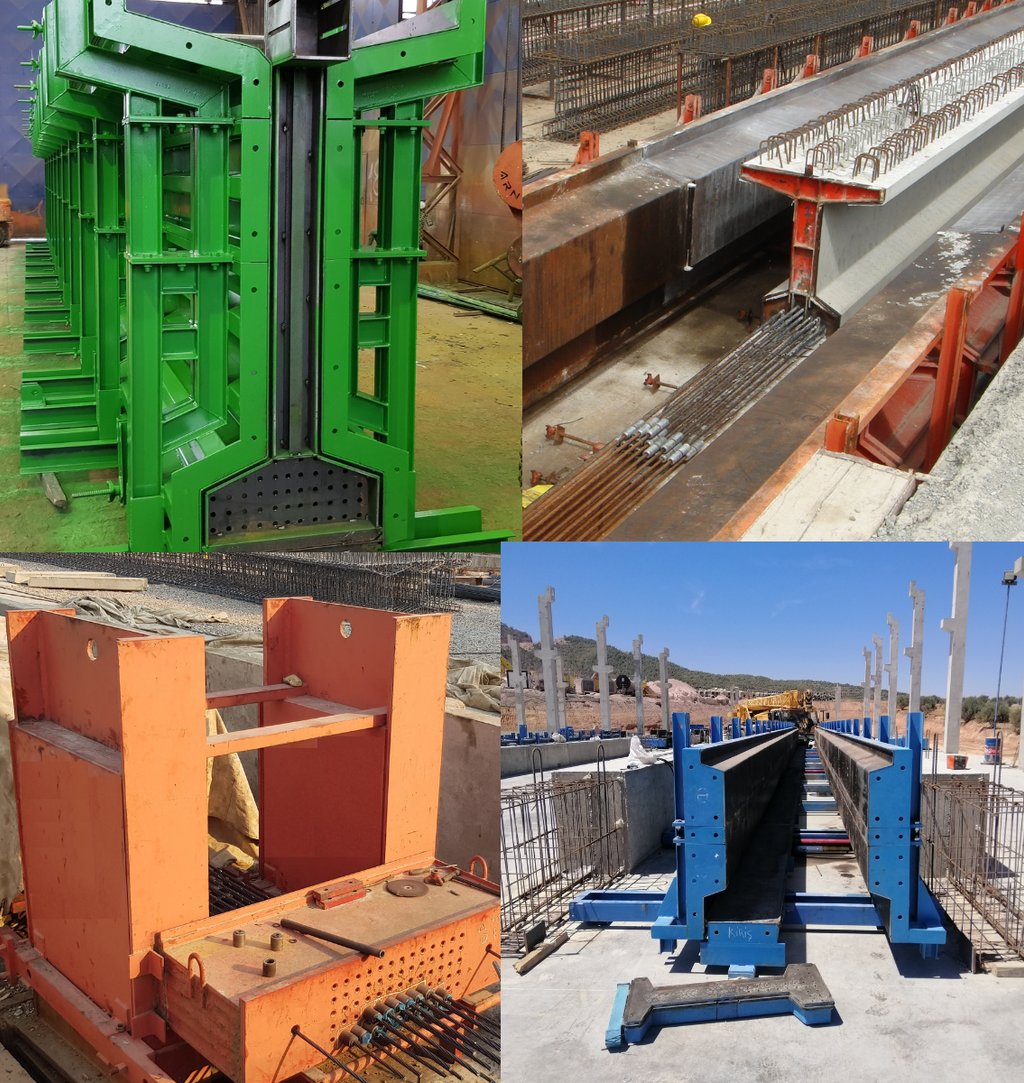The Importance of the Prestressing Method and Formwork Systems in I-Beam Production for Construction Structures
Blog gönderi açıklaması.
9/8/20243 min read


Modern construction technologies require advanced techniques and methods for the production of large and durable structural elements. At the forefront of these techniques are I-beams, which are structural concrete elements with high strength and durability, commonly used in large-scale structures such as bridges, buildings, and viaducts. The prestressing method and formwork systems used in the production of these beams play a crucial role in ensuring the longevity of these structures.
In this article, we will discuss where I-beams are used, how the prestressing method works, the role of formwork systems in production, and the equipment involved in these systems.
Applications of I-Beams
I-beams are structural elements that serve as the backbone of construction and are widely used in engineering projects. The I-shaped cross-section increases the beam's load-bearing capacity while optimizing material usage. The main structures where I-beams are used include:
Bridges and Viaducts: I-beams form the structural elements of bridges and viaducts, carrying loads across long spans. Prestressed concrete is especially used to enhance the stability and durability of bridges.
Multi-Story Buildings: In high-rise buildings, I-beams are used to transfer loads between floors, increasing the rigidity of the structure and making it more resistant to external factors such as earthquakes and wind.
Industrial Facilities and Warehouses: I-beams are frequently used in industrial facilities and warehouses where large spans and heavy loads need to be supported.
Highway and Railway Overpasses: I-beams are widely used in highway and railway overpasses. These beams are ideal for carrying heavy traffic loads and are durable for long-term use.
What is the Prestressing Method and How is it Applied?
The prestressing method is a technique used in the production of concrete elements to give the concrete higher tensile and compressive strength. Steel reinforcements are tensioned before the concrete is poured, applying force to the concrete. This method increases the strength of the beams, allowing longer spans and lighter elements to be used in construction.
Steps of the Prestressing Method:
Tensioning the Reinforcement: Steel cables or rods are tensioned with hydraulic presses before the concrete is poured, applying a high tensile force to the steel.
Pouring the Concrete: After the steel reinforcements are tensioned, the prepared concrete mixture is poured into the formwork. The reinforcements remain under tension within the formwork.
Curing the Concrete: Once the concrete is poured, it is left to cure for a certain period. As the concrete hardens, it integrates with the pre-tensioned reinforcements.
Releasing the Reinforcements: After the concrete has fully cured, the steel reinforcements are released. This process makes the reinforced concrete more resistant to tensile forces.
The Role of Formwork Systems in I-Beam Production
Formwork systems are a critical stage in the production of I-beams. The formworks, which allow the concrete to harden in the desired shape and dimensions, must be used with precision during the production process. In prestressed concrete production, the strength and precision of the formworks are extremely important.
Types of Formwork:
Fixed Formwork: Fixed formworks, often used for high-volume production, remain in place during the entire curing process of the concrete.
Movable Formwork: Used to speed up the pouring and removal processes, movable formworks can be easily shifted along the production line.
Modular Formwork: Modular formworks allow flexibility in the production of different sizes and shapes of I-beams.
Equipment Used in Formwork Systems
Various equipment and technologies are integrated into formwork systems to ensure efficient operation. These tools accelerate the production process and improve quality, while also reducing costs.
Machinery and Equipment:
Hydraulic Presses: These are used to tension the reinforcements during prestressing. These machines precisely stretch the reinforcements, enhancing the strength of the beams.
Lifting Cranes: Cranes are used for moving the formworks, pouring concrete, and removing cured I-beams from the formworks.
Concrete Pouring Units: Automated machines ensure that concrete is poured evenly and homogeneously into the formworks, while vibrations help the concrete settle properly.
Materials Used in Formworks:
Steel Formwork: Steel, the most common material used in formworks, stands out for its durability and long-term usability. It is preferred in projects that require high strength.
Aluminum Formwork: Aluminum formworks are easier to transport due to their lightweight structure and are used in smaller-scale projects.
Electrical System and Automation:
Formwork and prestressing systems are managed through automated control panels. These systems control the entire process of tensioning the reinforcement, pouring the concrete, and vibrating the concrete. Sensors and feedback systems allow real-time monitoring and control of the production process.
Vibration System:
Vibration devices are used to ensure that the concrete settles smoothly within the formwork and leaves no voids. Internal and external vibrators help compact the concrete evenly, enhancing its durability.
Conclusion
I-beams are critical structural elements in the construction sector, and the prestressing method and formwork systems used in their production are key to ensuring the durability and longevity of structures. With the prestressing method, beams offer greater strength with less material. Modern equipment and technologies used in formwork systems accelerate the production process, reduce costs, and improve product quality.
From bridges to high-rise buildings, from highway overpasses to industrial facilities, I-beams play an indispensable role in modern construction. Therefore, the use of prestressing and formwork systems in production is essential for ensuring the safety and durability of structures.
